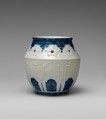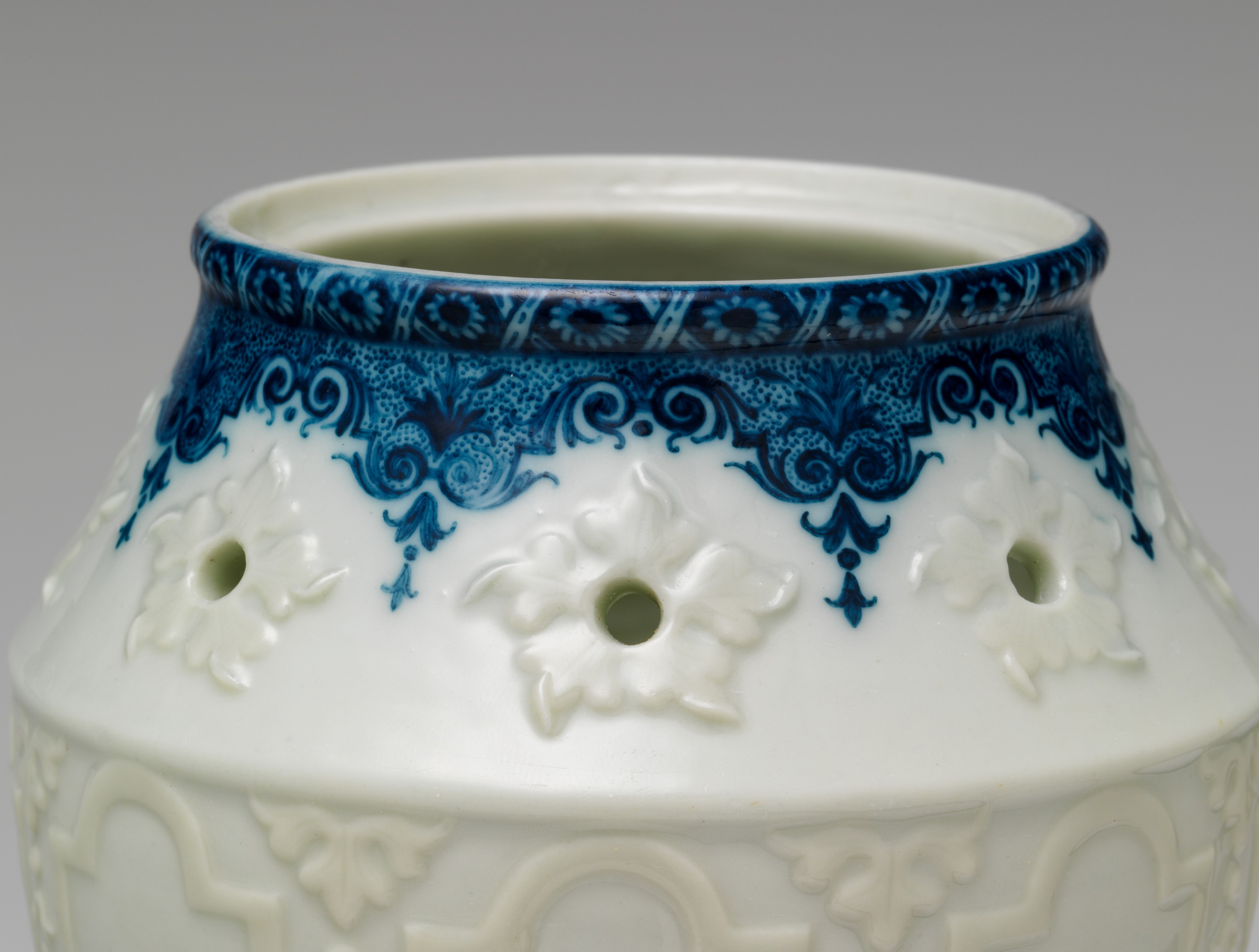Potpourri jar
Manufactory Louis Poterat Manufactory French
Not on view
Porcelain was highly prized in seventeenth-century Europe, and the popularity of imported Chinese and Japanese porcelains led to various experiments in France to produce porcelain domestically. The French were skilled at making faience (tin-glazed earthenware), but the ingredients for true or hard-paste porcelain—as produced in Asia—were not known to French potters at this time.
The most successful experiments in producing an artificial porcelain, known as soft-paste, were carried out in small faience factories in Saint-Cloud and Rouen. The Saint-Cloud factory eventually was able to manufacture soft-paste porcelain on a viable, commercial scale, but the production of soft-paste in Rouen remained on a very limited and experimental basis.
This pot pourri is one of the very few surviving examples of Rouen porcelain. None of the porcelain made in Rouen bears a factory mark, so the attribution to Rouen is based on the style of the decoration and on the noticeably bluish cast of the glaze, which appears to be a common characteristic of Rouen porcelain.
Due to rights restrictions, this image cannot be enlarged, viewed at full screen, or downloaded.
This artwork is meant to be viewed from right to left. Scroll left to view more.



